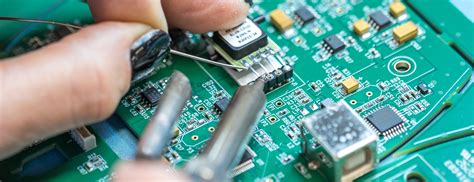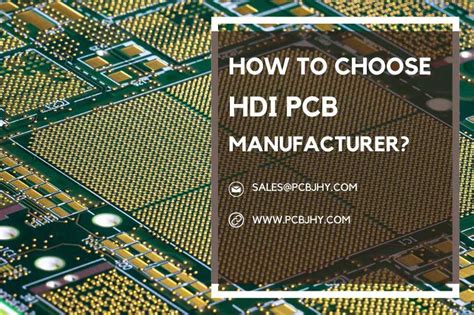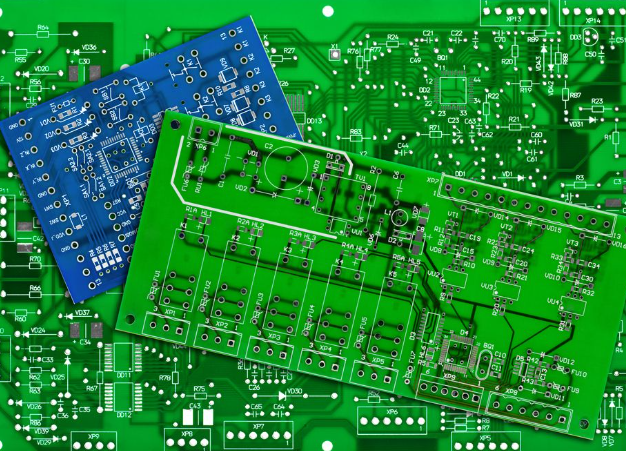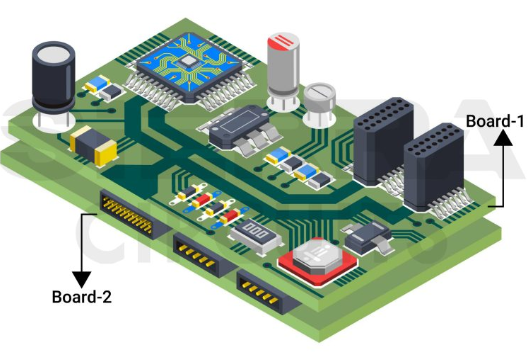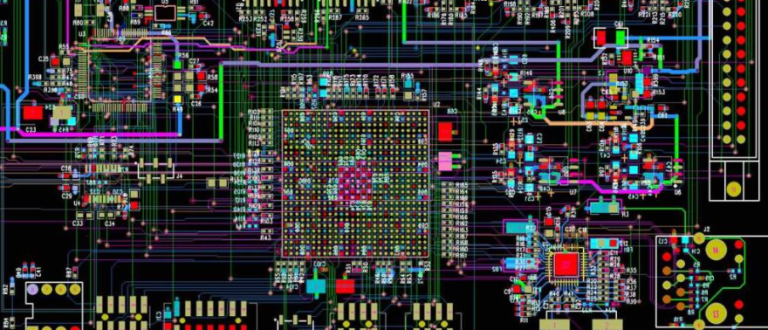Advancements in Electronic Assembly Fabrication Techniques

Key Takeaways
The evolution of electronic assembly fabrication has prominently centered on the integration and refinement of pcb assembly techniques. Recent advancements have led to more streamlined processes in pcba, contributing significantly to the efficiency of production methods. One notable shift is the adoption of advanced materials and innovative designs that enhance the overall performance and reliability of electronic components. The use of automated systems in these assembly processes reduces the likelihood of human error, ensuring that products meet stringent quality standards. Moreover, it facilitates a faster turnaround time—from design to production—allowing manufacturers to keep pace with market demands. As various industries increasingly rely on sophisticated electronics, these enhancements not only boost manufacturing output but also drive down costs per unit due to reduced waste and rework.
"Investing in improved electronic assembly techniques not only pays off in efficiency but also positions companies as leaders in a fast-evolving marketplace."
This holistic approach underscores a pivotal moment where technical innovation meets practical application, paving the way for future developments in this vital sector. As manufacturers continue to embrace these cutting-edge advancements, we can expect a continuous cycle of improvement that benefits both producers and consumers alike.

Introduction to Electronic Assembly Fabrication
The field of electronic assembly fabrication has seen transformative developments in recent years, particularly with regard to pcb assembly and pcba processes. This intricate discipline encompasses a variety of techniques and methodologies that enhance the production and reliability of electronic devices. As technology evolves, innovative methods, such as surface mount technology (SMT) and through-hole technology, have redefined traditional approaches, allowing for more compact designs and improved performance.
Additionally, advancements in automated assembly lines have significantly increased efficiency, reducing production times and minimizing human error. The introduction of intelligent manufacturing systems enables real-time monitoring, quality control, and adaptability in production schedules. These innovations not only streamline the assembly process but also provide insights into performance metrics that drive continuous improvement.
In tandem with efficiency enhancements, modern fabrication methods focus on increasing the reliability of end products. Techniques such as advanced soldering approaches ensure stronger connections on pcba, leading to devices that are better equipped to withstand various environmental conditions.
To illustrate these advancements more effectively, the following table summarizes key techniques in electronic assembly fabrication along with their benefits:
| Technique | Description | Benefits |
|---|---|---|
| Surface Mount Technology (SMT) | Attaches components directly onto the surface of PCB | Space-saving, lower manufacturing costs |
| Through-Hole Technology | Inserts components through holes drilled in PCB | High durability for physical stress |
| Automation | Use of robots in assembly processes | Increased efficiency and reduced errors |
| Advanced Soldering Techniques | Improved connection methods for stronger joints | Enhanced reliability |
In summary, advancements in electronic assembly fabrication are crucial for crafting innovative electronic products that meet the demands of modern society. The continuous evolution within this sector indicates a promising future for both manufacturers and consumers alike as these sophisticated techniques become more prevalent.

Innovative Techniques Revolutionizing Electronic Assembly
The field of electronic assembly fabrication is undergoing a significant transformation, driven largely by innovative techniques that enhance pcb assembly processes. Cutting-edge methods such as advanced pick-and-place technology and 3D printing have emerged, allowing for greater precision and reduced assembly times. For instance, the integration of automated optical inspection (AOI) systems ensures that each pcba is evaluated for quality throughout the manufacturing process, thereby minimizing defects and improving overall reliability. Additionally, the shift towards modular assembly processes has enabled manufacturers to design more complex circuits with fewer errors, streamlining production workflows. Techniques like surface mount technology (SMT) are now commonplace, as they facilitate higher density placements of components on pcbs, optimizing space and efficiency. Overall, these advancements resonate throughout the industry, setting new standards for performance and consistency in electronic manufacturing. As these innovative techniques continue to evolve, they promise to enhance not only the effectiveness of pcb assembly but also the reliability of electronic devices as a whole.
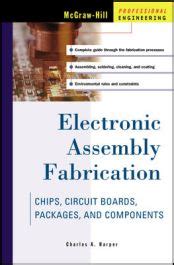
Enhancing Efficiency in Electronic Manufacturing Processes
The evolution of pcb assembly techniques has revolutionized the landscape of electronic manufacturing. Key advancements focus on streamlining processes to improve overall productivity without sacrificing quality. Innovative approaches such as surface mount technology (SMT) allow for higher density component placement, leading to smaller, more efficient devices that meet the ever-growing consumer demands. Automation plays a crucial role in enhancing efficiency; incorporating robotics and AI-driven systems minimizes human error, increases speed, and ensures consistency in pcba production. Additionally, implementing advanced software for real-time monitoring enhances workflow management and allows for timely interventions if issues arise. By adopting lean manufacturing principles that prioritize waste reduction and continuous improvement, manufacturers can achieve greater output with fewer resources, ultimately positioning themselves competitively in the market. As these techniques evolve, they not only bolster efficiency but also pave the way for sustainable practices within the industry, resonating with global trends toward environmentally-conscious production methods. The ongoing innovations in electronic assembly fabrication promise a future where electronic products are not only more reliable but also manufactured with optimal efficiency at their core.
Reliability Improvements in Modern Fabrication Methods
In the ever-evolving field of electronic assembly fabrication, there has been a notable emphasis on improving reliability in modern PCB assembly and PCBA processes. As technology advances, the materials and techniques used in these processes have been refined significantly, greatly enhancing the durability and performance of electronic components. For instance, the integration of advanced adhesives and substrates has led to greater resistance against factors such as heat, moisture, and mechanical stress. These innovations not only cater to higher reliability standards but also address the growing demand for compact and lightweight electronic devices. Additionally, manufacturers are increasingly adopting rigorous testing protocols during the PCBA process to ensure that each assembly meets stringent quality benchmarks. This commitment to quality control not only reduces the risk of early failure but also contributes to longer product lifecycles, ultimately fostering greater consumer trust in electronic products. The shift towards smarter design methodologies that leverage simulation tools enables more accurate predictions about how assemblies will perform under various conditions, paving the way for more reliable outcomes in electronic assembly fabrication. Thus, as these reliability improvements continue to shape modern practices, they play a critical role in the overall advancement of electronic manufacturing industries.
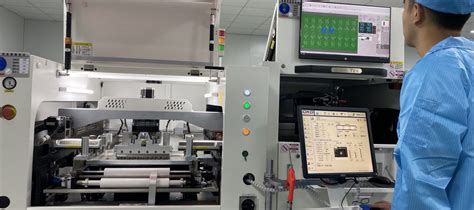
The Role of Automation in Electronic Assembly
Automation plays a critical role in the field of electronic assembly fabrication, significantly transforming the landscape of PCB assembly and PCBA processes. As manufacturers strive for greater precision and efficiency, automated systems have been developed to handle complex tasks that were once carried out manually. This shift not only reduces human error but also accelerates production timelines, allowing for quicker turnaround of products in response to market demands. Advanced robotic systems can precisely place components onto printed circuit boards with remarkable accuracy, ensuring optimal quality and high yield rates. Furthermore, the integration of artificial intelligence into automation enhances the ability to monitor processes in real-time, enabling adaptive manufacturing techniques that can quickly adjust to variations in production. The result is an overall increase in both efficiency and reliability, which are essential for modern electronic manufacturing. As technology continues to advance, it is expected that automation will further refine and define the pcb assembly landscape, paving the way for innovations that may transform how electronic assemblies are fabricated on a large scale.
Future Trends in Electronic Assembly Fabrication
As the field of electronic assembly fabrication continues to evolve, several future trends are poised to shape its trajectory significantly. One major trend is the increasing adoption of Automation and Artificial Intelligence in pcb assembly processes, allowing for high-speed production and minimizing human error. The integration of smart technologies facilitates real-time monitoring and data analytics, which enhances decision-making and process optimization. Furthermore, the use of advanced materials in pcba is becoming more prevalent, leading to enhanced performance characteristics and reducing manufacturing costs. The push towards miniaturization also has a profound impact; as devices become smaller and more complex, innovative fabrication techniques such as 3D printing and additive manufacturing are gaining traction. These methods not only streamline production but also contribute to sustainability by reducing material waste. Moreover, as consumer demand shifts towards customizable products, the flexibility offered by these new techniques allows manufacturers to respond swiftly to market changes while maintaining high standards of quality and reliability. In summary, the future of electronic assembly fabrication is likely to be characterized by a blend of automation, advanced materials, and innovative techniques that will redefine industry standards for efficiency and reliability.

Case Studies of Successful Implementation
In the rapidly evolving landscape of electronic assembly fabrication, numerous companies have demonstrated innovative approaches that not only optimize their manufacturing processes but also advocate for the broader adoption of advanced methodologies. One such case is a leading manufacturer that successfully implemented pcb assembly techniques utilizing pcba automation, significantly reducing their production time by approximately 30%. This shift allowed the company to enhance its output while maintaining high standards of quality. Another noteworthy example involves a startup that integrated augmented reality into its assembly line. By employing augmented reality tools, technicians were able to visualize complex circuitry during pcba processes, leading to improved accuracy and a decline in error rates by nearly 25%. These instances reflect a broader trend where organizations leverage cutting-edge technology to enhance the reliability and efficiency of their manufacturing operations. Additionally, these case studies not only underscore the importance of adopting innovative techniques but also serve as a model for others in the industry, showcasing how combined advancements in automation and visualization can redefine the scope and capacity of electronic assembly fabrication. Through these implementations, companies are not only improving their operational frameworks but also contributing to setting new industry benchmarks that emphasize both efficiency and reliability in pcb assembly production.
Conclusion: The Impact of Advancements on the Industry
The evolution of pcb assembly techniques has significantly transformed the landscape of electronic manufacturing. As highlighted throughout this article, advancements in pcba processes have introduced innovative methods that not only improve production efficiency but also enhance the overall reliability of electronic assemblies. These improvements have allowed manufacturers to meet the increasing demand for high-quality electronics while maintaining cost-effectiveness. Moreover, the integration of automation into pcb assembly has streamlined workflows, reducing lead times and minimizing human error. As we look to the future, it is evident that these advancements will continue to shape industry standards and best practices, paving the way for more sophisticated products and a competitive edge in a rapidly evolving market. Embracing these changes will be crucial for companies aiming to thrive in an environment where agility and technological prowess are paramount. The journey is far from over; ongoing research and development promise even more groundbreaking innovations that will redefine the possibilities within electronic assembly fabrication.
Conclusion: The Impact of Advancements on the Industry
In recent years, the field of electronic assembly fabrication has experienced remarkable advancements that are poised to transform the pcb assembly landscape. With the introduction of innovative techniques and technologies, manufacturers are now able to enhance the efficiency of their pcba processes significantly. Automation plays a pivotal role in this evolution, allowing for more precise and consistent production lines. Moreover, improvements in material quality and design flexibility have contributed to a newfound reliability within modern fabrication methods. As these advancements continue to unfold, companies that adapt swiftly will not only maintain a competitive edge but also ensure their products meet ever-increasing consumer expectations. In this rapidly evolving sector, remaining informed and agile will be essential for success in harnessing the full potential of next-generation electronic assembly technologies. Ultimately, these advancements shape not just individual businesses but the entire industry by driving progress and fostering innovation at an unprecedented scale.
FAQs
What is electronic assembly fabrication?
Electronic assembly fabrication refers to the process of creating and assembling electronic components and circuits into functional devices. This process includes various stages, including pcb assembly and pcba, which involve soldering, mounting, and connecting components to the printed circuit board.
What are the latest advancements in electronic assembly techniques?
Recent advancements include the adoption of advanced automation technologies, innovative pcb assembly methods, and enhanced inspection techniques that improve accuracy. These innovations help manufacturers streamline operations, reduce costs, and ensure high-quality results.
How does automation affect electronic assembly fabrication?
Automation plays a crucial role in enhancing efficiency and reliability in electronic manufacturing processes. With automated systems in place for tasks like component placement and soldering, companies enjoy faster production times while minimizing human error during pcba processes.
What benefits do these innovations bring?
The latest techniques improve efficiency by optimizing workflows, reducing cycle times, and enhancing productivity. Additionally, improved designs in the layout contribute to better thermal management and signal integrity, which are essential for device performance.
Where can I learn more about electronic assembly solutions?
For more information on modern pcb assembly techniques and how they can benefit your manufacturing processes, please click here: Explore PCB Assembly Solutions.

